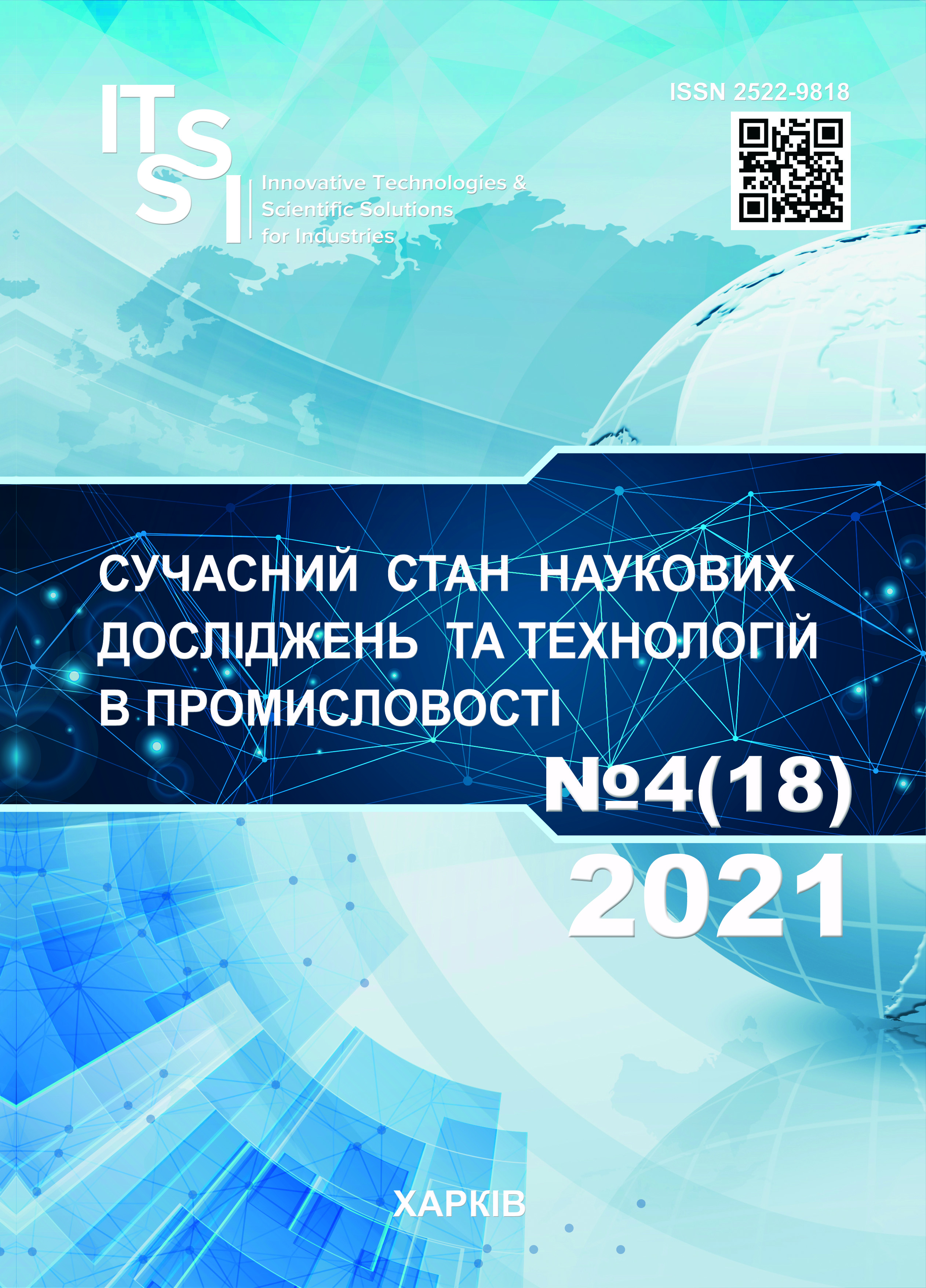КОНЦЕПЦІЯ СТВОРЕННЯ ІНТЕЛЕКТУАЛЬНОГО ЯДРА ІНТЕГРОВАНОЇ ІНФОРМАЦІЙНО-АНАЛІТИЧНОЇ СИСТЕМИ ЩОДО ДІЙ У НАДЗВИЧАЙНИХ СИТУАЦІЯХ ТЕХНОГЕННОГО ХАРАКТЕРУ
DOI:
https://doi.org/10.30837/ITSSI.2021.18.040Ключові слова:
надзвичайна ситуація техногенного характеру, підтримка прийняття рішень, процесна модель, інтегрована інтелектуальна інформаційно-аналітична система, отруйна хімічна речовинаАнотація
Предмет. Інформатизація процесів протидії надзвичайним ситуаціям техногенного характеру. Мета. Підвищення ефективності процесу інформаційної підтримки прийняття рішень при подоланні наслідків техногенних надзвичайних ситуацій, в аспекті її інтелектуалізації, шляхом створення концепції інтеграції різноманітних програмних засобів в рамках єдиного, гомогенного простору знань про стратегічні, тактичні й оперативні дії в умовах широкого спектру аварій та катастроф, пов’язаних із функціонуванням технічних об’єктів. Завдання. Розробити формальну постановку задачі прийняття рішень в умовах надзвичайної ситуації та обґрунтувати методологію її реалізації на основі інтеграції засобів виведення на знаннях із різноманітними аналітичними моделями, що описують процеси існування надзвичайних ситуацій. Розглянути застосування запропонованої методології на сценарному прикладі, що відтворює ситуацію на об’єкті після витоку сильно діючої отруйної речовини. Методи. Системний аналіз – при розробці комплексної процесної моделі прийняття рішень в умовах надзвичайної ситуації; програмна інженерія – при створенні архітектури інтегрованої інтелектуальної системи підтримки прийняття рішень в умовах надзвичайних ситуацій техногенного характеру; фізика процесів розповсюдження отруйних хімічних речовин в атмосфері – при розробці сценарного прикладу обстановки на об’єкті в умовах надзвичайної ситуації на промисловому об’єкті. Результати. Концепція створення інтегрованої інтелектуальної системи підтримки прийняття рішень щодо подолання наслідків надзвичайних ситуацій техногенного характеру, зокрема, описано формальну постановку типового завдання прийняття рішень у НС, а також викладено основні засади її вирішення, та розроблено постановку завдання моделювання процесів управління, пов'язаних із НС техногенного характеру. Висновки. Викладено концепцію створення інтегрованої інформаційно-аналітичної системи підтримки прийняття рішень в умовах техногенних надзвичайних ситуацій. В рамках даної концепції розроблено формальні моделі прийняття рішень в умовах техногенних надзвичайних ситуацій та підхід до інтеграції різнорідних програмних засобів в рамках єдиного, гомогенного простору знань про комплексні заходи щодо подолання наслідків надзвичайних ситуацій, що пов’язані із аваріями та катастрофами на об’єктах технічної інфраструктури. Розглянуто сценарний приклад організації інтелектуальної підтримки рішень при викиді в атмосферу отруйної хімічної речовини.
Посилання
PRIO, replaces Swedish Chemicals Agency’s Observation, available at: http://www.kemi.se/templates/PRIOEngframes____4144.aspx
U.S. Environmental Protection Agency, available at: http://www.epa.gov/
European Topic Centre on Air & Climate Change (2003), Brussels.
Enescu, Maria (2009), "The elements of the dispersion theory applied to the mathematical shaping of the atmosphere pollution by high burning installation – i.m.a.", Proc. International conference "The knowledge society in the space of united Europe", May 29th - 30th, Timişoara, ROMANIA.
Borysiewicz, M.J., Borysiewicz, M. A. (2006), Atmospheric dispersion modeling for emergency management, Institute of Atomic Energy, Р. 88.
Scire, J., Strimaitis, D., Yamartino, R. (2000), A user’s guide for the CALPUFF dispersion model, Concord: Earth Tech, Р. 521.
About the statement of the Methodology of forecasting of consequences of spill (emission) of dangerous chemicals at accidents on industrial objects and transport: order of the Cabinet of Ministers of Ukraine dated April 10, 2001, No. 326/5517 // – 2001.
Luger, G. F. (2002), Artificial intelligence. Structures and strategies for complex problem solving, Addison Wesley: Boston, Р. 864.
Makhviladze, G.M., Yakush, S.E. (2002), "Large-scale unconfined fires and explosions", Proc. of the Compustion Institute, Vol. 29, P. 195–210.
Witlox, H.W.M. (2000), Unified Dispersion Model (UDM Version 6.0) Consequence Modelling Documentation, Theory Manual, Det Norske Veritas.
Olesen, H.R. (2005), User's Guide to the Model Validation Kit, National Environmental Research Institute, Denmark, Research Notes from NERI, No. 226, Р.72.
Crainic, T.G., Roy, J. O. R. (1988), "Tools for Tactical Freight Transportation Planning", European Journal of Oper, Res, 33(3), P. 290–297.
Gryning, Sven-Erik, Batcharova, E. (2000), Air pollution modeling and its application XIII, Р. 815.
The HGSYSTEM version 3.0 technical reference manual (1994), "Shell Internationale Research Maatschappij BV", Hague.
Ehrhard, J., Khatib, I., Winkler, C., Kunz, R. (2000), "The microscale model MIMO: development and assessment", Journal of Wind Engineering and Industrial Aerodynamics, V. 85, Р. 163–176.
##submission.downloads##
Опубліковано
Як цитувати
Номер
Розділ
Ліцензія
Авторське право (c) 2021 Кузнецова Юлія

Ця робота ліцензується відповідно до Creative Commons Attribution-NonCommercial-ShareAlike 4.0 International License.
Наше видання використовує положення про авторські права Creative Commons для журналів відкритого доступу.
Автори, які публікуються у цьому журналі, погоджуються з наступними умовами:
Автори залишають за собою право на авторство своєї роботи та передають журналу право першої публікації цієї роботи на умовах ліцензії Creative Commons Attribution-NonCommercial-ShareAlike 4.0 International License (CC BY-NC-SA 4.0), котра дозволяє іншим особам вільно розповсюджувати опубліковану роботу з обов'язковим посиланням на авторів оригінальної роботи та першу публікацію роботи у цьому журналі.
Автори мають право укладати самостійні додаткові угоди щодо не комерційного та не ексклюзивного розповсюдження роботи у тому вигляді, в якому вона була опублікована цим журналом (наприклад, розміщувати роботу в електронному сховищі установи або публікувати у складі монографії), за умови збереження посилання на першу публікацію роботи у цьому журналі.
Політика журналу дозволяє і заохочує розміщення авторами в мережі Інтернет (наприклад, у сховищах установ або на особистих веб-сайтах) рукопису опублікованої роботи, оскільки це сприяє виникненню продуктивної наукової дискусії та позитивно позначається на оперативності та динаміці цитування опублікованої роботи.














